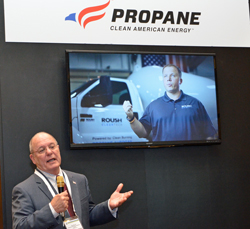The first African Sustainable Transport Forum is taking place this week in Nairobi, Kenya and the Global Renewable Fuels Alliance (GRFA) called on forum attendees to adopt biofuel friendly policies and regulations that would kick-start the increased use of sustainable biofuels in Africa’s transport sector.
“This Forum is an opportunity that should be grasped by Africa to take a vital step towards more sustainable transportation options. The potential of sustainable biofuels should be at the centre of these talks because they are the best sustainable transport option, both in environmental and economic terms,” said Bliss Baker, spokesperson for the GRFA.
 Earlier this year the GRFA forecasted that 2014 global ethanol production would reach 90.38 billion litres and its use worldwide would reduce GHG emissions by over 106 million tonnes globally. “106 million tonnes or 21 million cars in GHG reductions is massive, it’s the same as removing all the cars registered in Malaysia off the road, but much more can be achieved if African leaders choose a path towards a more sustainable future for African transport,” said Baker.
Earlier this year the GRFA forecasted that 2014 global ethanol production would reach 90.38 billion litres and its use worldwide would reduce GHG emissions by over 106 million tonnes globally. “106 million tonnes or 21 million cars in GHG reductions is massive, it’s the same as removing all the cars registered in Malaysia off the road, but much more can be achieved if African leaders choose a path towards a more sustainable future for African transport,” said Baker.
While biofuel production in Africa has remained relatively low when compared to other regions, it has grown year on year with ethanol production alone now forecasted to reach 260 million litres in 2014. The domestic use of this ethanol fuel could reduce Africa’s GHG emissions by 325,000 tonnes.
“In addition to the important opportunity to reduce GHG emissions in transport, biofuels also offer African countries a fantastic opportunity to spark much-needed investment in agriculture, and, by creating jobs and boosting household incomes, poverty can be alleviated and food security improved. Sustainable biofuels are an important tool to help enable the revival of Africa’s rural communities, Africa’s political leaders need to promote them,” added Baker.
Baker said that African Sustainable Transport Forum attendees should note that the country’s biofuels opportunity was identified in 2010 by the World Bank when it released “Biofuels in Africa: Opportunities, Prospects and Challenges.” The report found that “a new economic opportunity for sub-Saharan Africa is looming large: biofuel production…Africa is uniquely positioned to produce these new cash crops for both domestic use and export. The region has abundant land resources and preferential access to protected markets with higher-than-world-market prices. The rapid growth in the demand for transport fuels in Africa and high fuel prices create domestic markets for biofuels.
 Chicago-based Alpha Baking Company received this year’s Propane Autogas Fleet award from the Propane Education & Research Council (PERC) at the annual Green Fleet Conference & Expo in Schaumburg, Illinois this week.
Chicago-based Alpha Baking Company received this year’s Propane Autogas Fleet award from the Propane Education & Research Council (PERC) at the annual Green Fleet Conference & Expo in Schaumburg, Illinois this week. 










